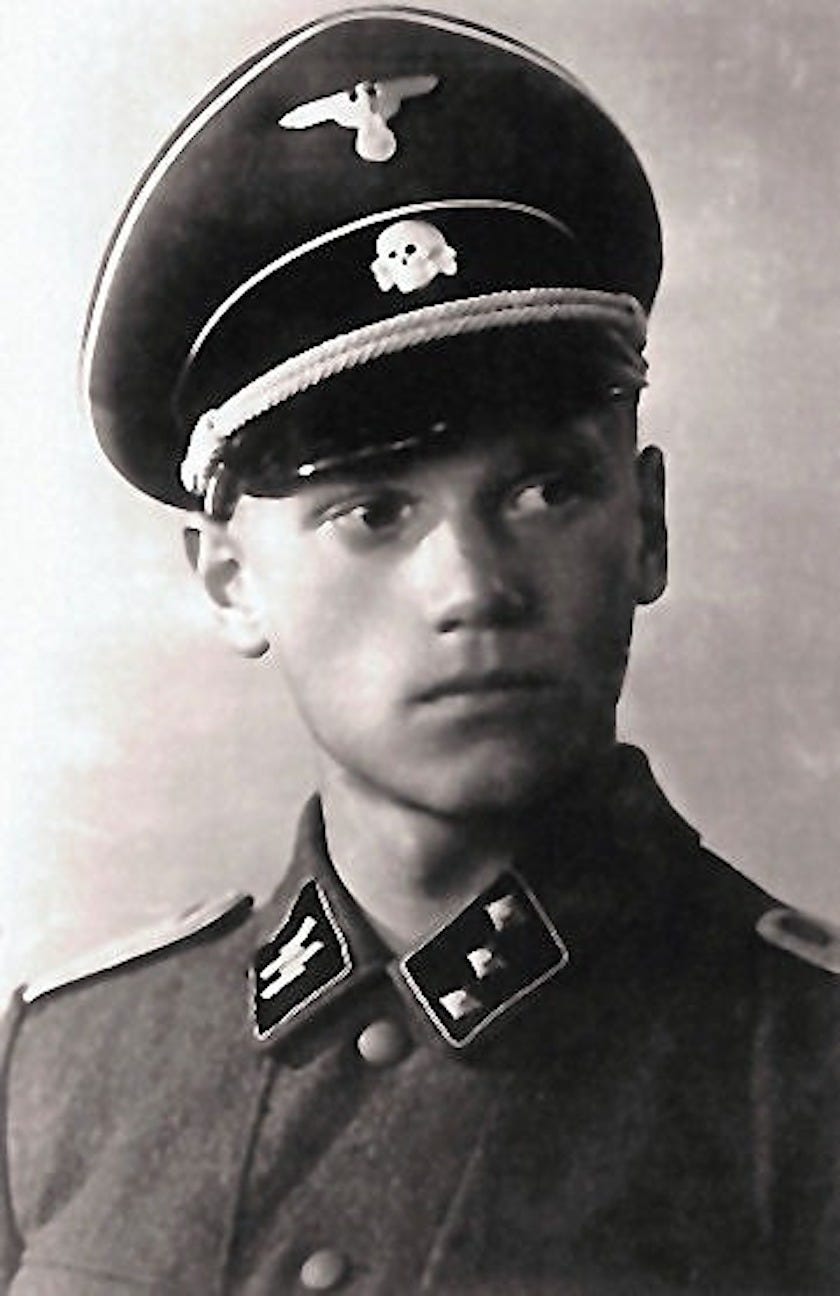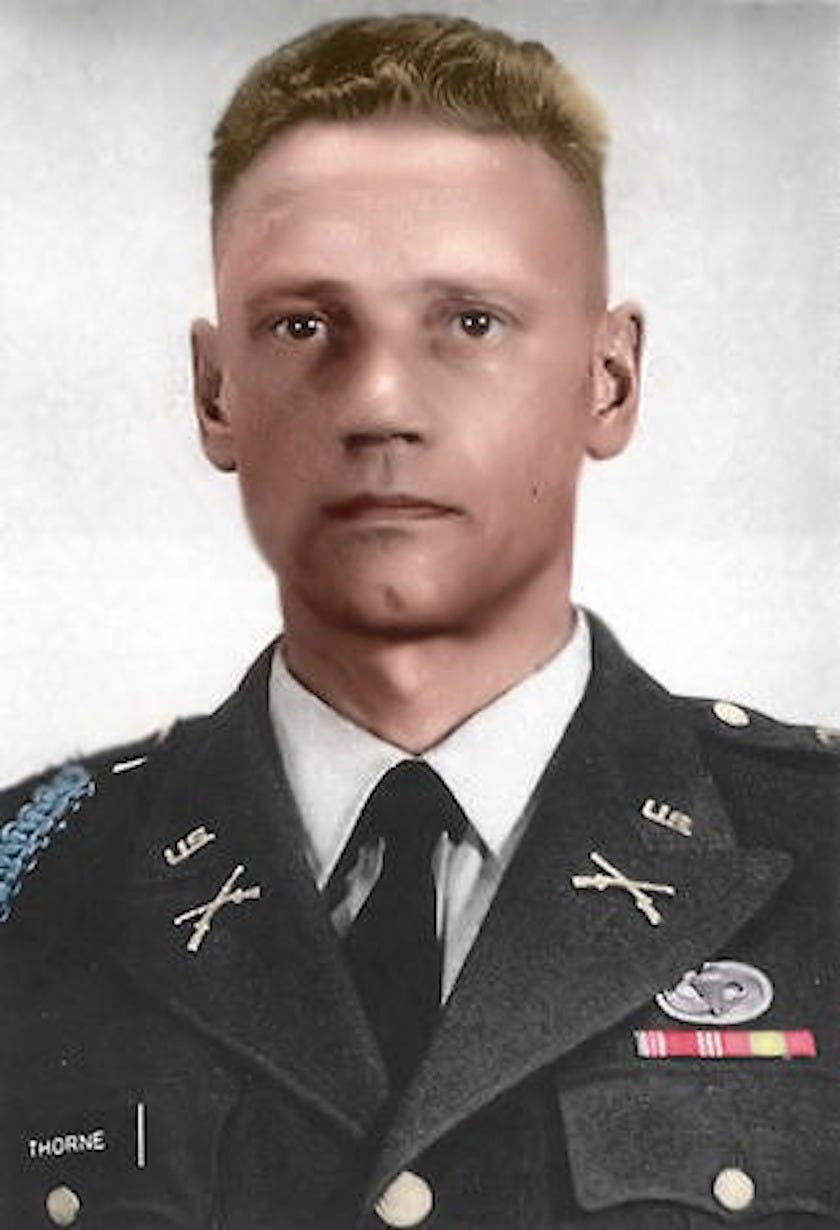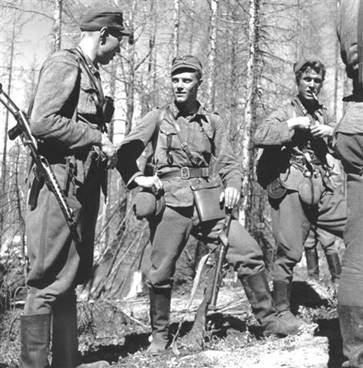miheikki
Greatest Leader
Ulkomaan lehdetkin tarinoi ukosta, mutta MP.netistä ei löytynyt ketjua.
Suomalaisen sotasankarin tarina kiehtoo ulkomailla: ”Moni piti häntä tuhoutumattomana”
KOTIMAA JULKAISTU 03.07.2015 19:39
1.2K
Jakoa
FacebookTwitterWhatsApp 55
Lauri Törni (keskellä) palveli sotilasuransa aikana peräti kolmen eri maan armeijoissa.SA-kuva
Suomalaisen sotasankarin Lauri Törnin elämän uskomattomat vaiheet kiinnostavat myös ulkomailla. Yhdysvaltalaislehti Business Insider on tehnyt miehestä pitkän jutun verkkosivuilleen.
Lehti käyttää lähteenään vuonna 2003 Helsingin Sanomissajulkaistua juttua.
Törni ei ole ollut rapakon takana täysin tuntematon suuruus aiemminkaan, sillä hän palveli Yhdysvaltojen armeijan erikoisjoukkojen kapteenina 1960-luvun alussa. Törni oli mukana operaatioissa ainakin Iranissa ja Vietnamissa.
Joutui maanpetossyytteeseen
Yhdysvalloissa nimellä Larry Thorne tunnettu Törni palveli yhteensä kolmen maan armeijassa. Vuonna 1919 syntynyt viipurilainen ansaitsi Suomen armeijassa nopeasti kapteenin arvon ja taisteli venäläisiä vastaan talvi- ja jatkosodissa. Hän loukkaantui vakavasti hiihdettyään miinaan, mutta palkittiin jatkosodassa Mannerheim-ristillä.
Lapin sodan aikana Törni matkusti Saksaan, missä hän liittyi maan armeijaan. Tämä johti lopulta maanpetossyytteeseen ja vangitsemiseen, kun Törni palasi takaisin Suomeen.
Kohtalokas helikopterionnettomuus
Törnin yli kaksi vuosikymmentä kestänyt sotilasura päättyi vasta vuonna 1965, kun häntä kuljettanut helikopteri törmäsi vuorenseinään, mikä koitui legendaarisen sotilaan kohtaloksi.
Törni oli kiistelty persoona ja monet hänen vaiheensa ovatsynnyttäneet debattia Suomessa. Sotilaana Törni oli kuitenkin vertaansa vailla ja tovereidensa arvostama.
Törnin palvellessa Yhdysvaltojen erikoisjoukoissa hän sai kanssasotilaiden keskuudessa lähes legendan aseman. Kuolema helikopterionnettomuudessa keskellä viidakkoa aiheutti epäuskoa.
– Moni ajatteli, että hän oli lähes tuhoutumaton sotilas, joka olisi muina miehinä kävellyt takaisin viidakosta. Monen oli vaikeaa uskoa, että hän oli kuollut, Business Insider kirjoittaa HS:n juttuun viitaten.
The crazy story of the man who fought for Finland, the Nazis, and US Army Special Forces
- Jul. 2, 2015, 8:56 AM
- 78,001
- 57
- according to the newspaper Helsingin Sanomat.
WikipediaLauri Törni as a Finnish soldier.
He quickly rose to the rank of captain and took command of a group of ski troops, who quite literally skied into battle against enemy forces.
In 1942 he was severely wounded after he skied into a mine, but that didn't slow him down. In 1944, during what the Finns called The Continuation War, he received Finland's version of the Medal of Honor — the Mannerheim Cross — for his bravery while leading a light infantry battalion.
Unfortunately for Törni, Finland eventually fell to the communists in 1944.
But instead of surrendering, he joined up with the German SS so he could continue to fight the Soviets.
He received additional training in Nazi Germany and then looked forward to returning to the battlefield.
WikipediaLauri Törni as a German SS soldier.
But then Germany fell, too, and the Finn-turned-Waffen SS officer was arrested by the British, according to War History Online.
Not that being put into a prison camp would stop him either.
"In the last stages of the war he surrendered to the British and eventually returned to Finland after escaping a British POW camp," the account at War History Online reads.
"When he returned, he was then arrested by the Finns, even though he had received their Medal of Honor, and was sentenced to six years in prison for treason."
He ended up serving only half his sentence before he was pardoned by the president of Finland in 1948.
Törni's path to the US Army was paved by crucial legislation from Congress along with the creation of a new military unit: Special Forces.
June 1950 saw the passing of the Lodge-Philbin Act, which allowed foreigners to join the US military and allowed them citizenship if they served honorably for at least five years.
Just two years later, the Army would stand up its new Special Forces unit at Fort Bragg, North Carolina.
More than 200 Eastern Europeans joined Army Special Forces before the Act expired in 1959, according to historian Max Boot.
Among those was Törni, who enlisted in 1954 under the name Larry Thorne.
"The Soviets wanted to get their hands on Thorne and forced the Finnish government to arrest him as a wartime German collaborator," the account at Arlington Cemetery.net reads.
"They planned to take him to Moscow to be tried for war crimes. Thorne had other plans. He escaped, made his way to the United States, and with the help of Wild Bill Donovan became a citizen. The wartime head of the OSS knew of Thorne's commando exploits."
A Special Forces legend
US Army PhotoLauri Törni in the US Army.
Thorne quickly distinguished himself among his peers of Green Berets. Though he enlisted as a private, his wartime skill set led him to become an instructor at the Special Warfare School at Fort Bragg, teaching everything from survival to guerrilla tactics.
In 1957 he was commissioned a second lieutenant, and he would rise to the rank of captain just as war was on the horizon in Vietnam.
But first he would take part in a daring rescue mission inside Iran. In 1962, then-Captain Thorne led an important mission to recover classified materials from a US Air Force plane that crashed on a mountaintop on the Iran-Turkish-Soviet border, according to Helsingin Sanomat. Though three earlier attempts to secure the materials had failed, Thorne's team was successful.
According to the US Army:
Thorne quickly made it into the U.S. Special Forces and in 1962, as a Captain, he led his detachment onto the highest mountain in Iran to recover the bodies and classified material from an American C-130 airplane that had crashed. It was a mission in which others had failed, but Thorne's unrelenting spirit led to its accomplishment.
This mission initially formed his status as a U.S. Special Forces legend, but it was his deep strategic reconnaissance and interdiction exploits with Military Assistance Command, Vietnam Studies and Observation Group, also known as MACV-SOG, that solidified his legendary status.
In Vietnam, he earned the Bronze Star medal for heroism, along with five Purple Hearts for combat wounds, War History Online writes. According to Helsingin Sanomat, his wounds allowed him to return to the rear away from combat, but he refused and instead requested command of a special-operations base instead.
On October 18, 1965, Thorne led the first MACV-SOG cross-border mission into Laos to interdict North Vietnamese movement down the Ho Chi Minh trail. Using South Vietnamese Air Force helicopters, his team was successfully inserted into a clearing inside Laos while Thorne remained in a chase helicopter to direct support as needed. Once the team gave word it had made it in, he responded that he was heading back to base.
Roughly five minutes later, while flying in poor visibility and bad weather, the helicopter crashed. The Army first listed Thorne as missing in action, then later declared he was killed in action — in South Vietnam. The wreckage of the aircraft was found before the end of the war, and the remains of the South Vietnamese aircrew were recovered, but Thorne's body was never found.
Thorne's exploits in combat made him seem invincible among his Special Forces brothers, and with his body never recovered, many believed he had survived the crash and continued to live in hiding or had been taken prisoner by the North Vietnamese, according to POW Network.
"Many believed he was exactly the sort of near-indestructible soldier who would have simply walked back out of the jungle, and they found it hard to believe he had been killed," Helsingin Sanomat writes.
The mystery was finally put to rest in 1999. The remains of the legendary Special Forces soldier were recovered from the crash site. DNA confirmed the identities of the aircrew, while dental records proved Törni had died on that fateful night in 1965, Helsingin Sanomat reported.
"He was a complex yet driven man who valorously fought oppression under three flags and didn't acknowledge the meaning of quit," US Army Special Forces Col. Sean Swindell said during a ceremony in 2010.
Read the original article on We Are The Mighty. Copyright 2015. Follow We Are The Mighty on Twitter.
Read more: http://www.wearethemighty.com/larry-thorne-special-forces-2015-07#ixzz3euMPyHup







